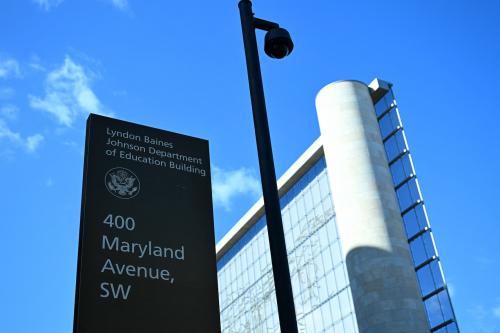Can we have a bureaucracy that is innovative, streamlined, modern, competitive, and efficient? Think it’s impossible? According to a comprehensive report out today from the Partnership for Public Service, it is well within reach.
The report offers a wide-ranging look at the serious problems—and outright failures—plaguing the current civil service system and a broad set of solutions to address them. The report operates from a basic premise that the current system is fractured (many agencies have received unique carve-outs and exemptions over the years) and outdated (the system was designed over 60 years ago). The civil service system needs to change in the same ways that commerce, technology, and society have changed since World War II. However, because of legislative and regulatory barriers, the system remains largely the same as it was in the 1950s.
What happens when a civil service system fails to change in changing times? Bureaucracy becomes synonymous with inefficiency, duplication, costliness, etc.
The Partnership has six key ways to improve the system:
- Unifying the Civil Service. The federal government needs to promote flexibility and communication in ways that allows the government to operate as “an integrated enterprise” that is both efficient and mission driven, constantly seeking to improve itself from within.
- Classifying Jobs & Setting Pay. The system in which we compensate and promote employees was designed to compete with the private sector in the 1940s and 1950s. As a result, the government is falling far behind. Streamlining and reevaluating how the government evaluates success and compensates its workers is essential for advancing a competitive workforce.
- Expecting & Rewarding Excellence. A huge concern among people inside and outside of government is that exceptional performance goes unrewarded and poor performance is swept under the rug. The Partnership proposes a streamlined, data-driven, comprehensive means of recognizing, promoting and rewarding performance that affects every federal employee from entry-level civil servant to senior-level executive.
- Hiring the Best & the Brightest. One challenge facing the federal government is that it is often hard to compete with the private sector in recruiting and retaining the best talent. The Partnership acknowledges that this is a problem that will never be fully solved, but they offer some key improvements including direct-hire power for agencies, innovative skill assessment of applicants, and enhanced agency communication regarding the highest qualified candidates. These changes will improve outcomes, reduce costs, and better equip agencies to lure higher quality talent into the bureaucracy.
- Accountability & Workplace Justice. Streamlining the workplace appeals system is a vital part of the Partnership’s reform proposal. Abuses of the appeals process—and even simple use of its multiple thoroughfares—leads to cost overruns, duplication, confusion, reduced moral, and has a chilling effect on future for-cause dismissals. In their proposal, the Partnership develops a “reconstituted” Merit Systems Protection Board through which almost all appeals will run. The reform will protect employee rights while buffering agencies from unnecessary, multiple appeals.
- Investing in Leadership. Leadership in many federal agencies is severely lacking, and the 1978 Civil Service Reform Act has fallen far short of its lofty goal of creating a talented, nimble corps of senior executives. The Partnership proposes a substantial overhaul of government leadership that affects the number of appointees as well as the manner in which senior civil servants are selected, trained, retained, promoted, and assigned.
The report, formally titled “Building the Enterprise: A New Civil Service Framework” provides a comprehensive look at the needs of the federal workforce in a modern era. The exemplary analysis examines all levels of government employment, addressing issues of staffing, organizational structure, compensation, leadership and management, training, and accountability. It also provides a framework for the implementation of these changes, which the Partnership notes is challenging but essential.
Researchers, government workers, legislators, and everyday citizens should read this report. Rather than resorting to blanket criticisms of the federal workforce that label bureaucrats as lazy and inefficient, it is important to consider the system in which most federal workers operate. It is outdated and leads to unavoidable problems. If Congress is serious about combating government inefficiency, waste, stagnation, and slack, it will pass comprehensive reforms like the ones found in this report.
The Brookings Institution is committed to quality, independence, and impact.
We are supported by a diverse array of funders. In line with our values and policies, each Brookings publication represents the sole views of its author(s).




Commentary
The Partnership’s Plan for a New and Improved Civil Service
April 2, 2014